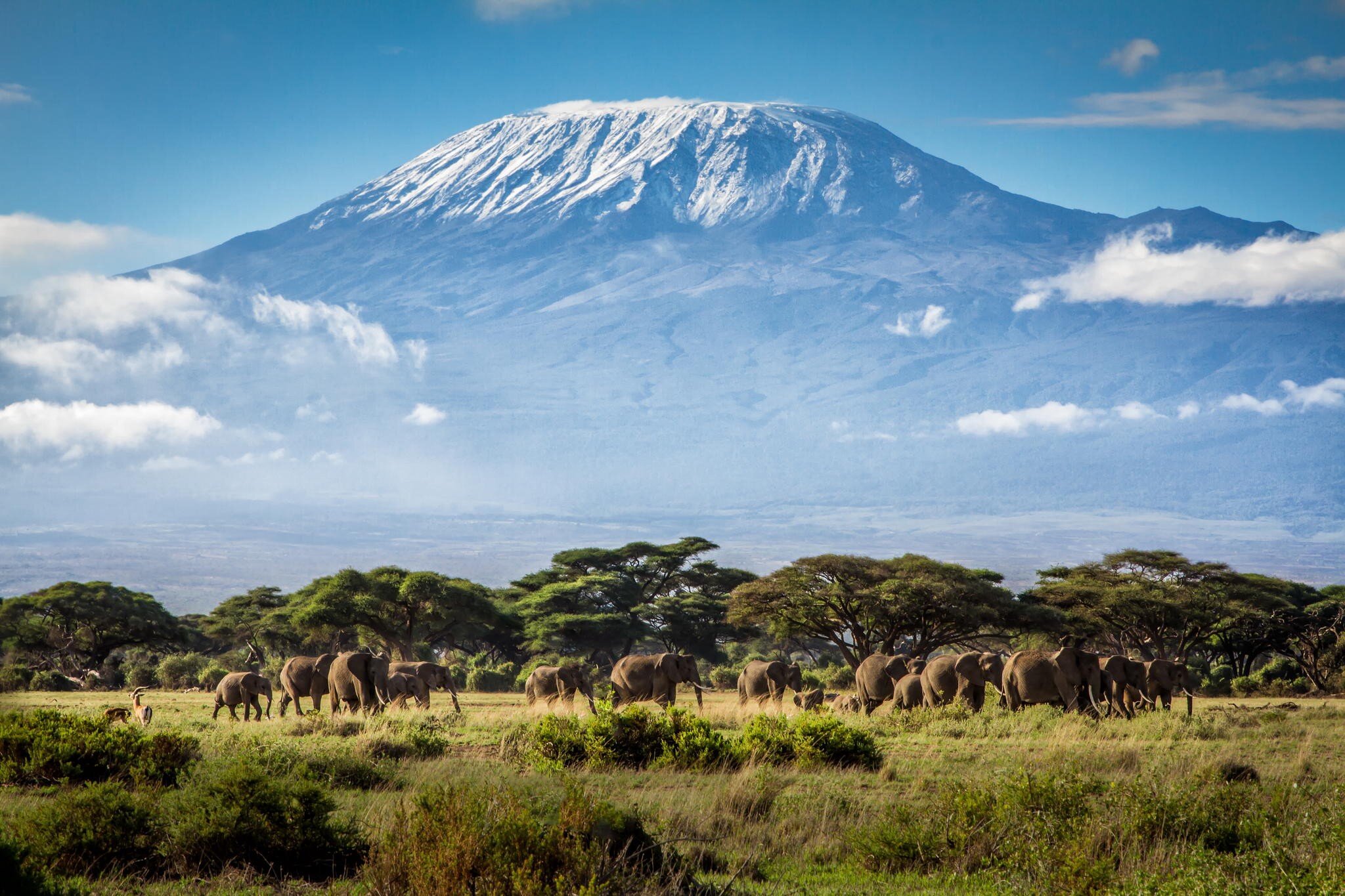Kilimanjaro
Kilimanjaro National Park is a Tanzanian national park, located 300 kilometres (190 mi) south of the equator and in Kilimanjaro Region, Tanzania. The park is located near the city of Moshi. The park includes the whole of Mount Kilimanjaro above the tree line and the surrounding montane forest belt above 1,820 metres (5,970 ft). It covers an area of 1,688 square kilometres (652 sq mi), 2°50'–3°10'S latitude, 37°10'–37°40'E longitude. The park is administered by the Tanzania National Parks Authority (TANAPA).

Roof of Africa
Information
In the early twentieth century, Mount Kilimanjaro and the adjacent forests were declared a game reserve by the German colonial government. In 1921, it was designated a forest reserve. In 1973, the mountain above the tree line (about 2,700 metres (8,900 ft)) was reclassified as a national park. The park was declared a World Heritage Site by the United Nations Educational, Scientific and Cultural Organization in 1987. In 2005, the park was expanded to include the entire montane forest, which had been part of the Kilimanjaro Forest Reserve.
Fauna
A variety of animals can be found in the park. Above the timberline, the Kilimanjaro tree hyrax, the grey duiker, and rodents are frequently encountered. The bushbuck and red duiker appear above the timberline in places. Cape buffaloes are found in the montane forest and occasionally in the moorland and grassland. Elephants can be found between the Namwai and Tarakia rivers and sometimes occur at higher elevations. In the montane forests, blue monkeys, western black and white colobuses, bushbabies, and leopards can be found.
One of the world’s Seven Summits and the most famous mountain on the continent of Africa, Kilimanjaro, at 5,895 meters, is climbed by mountaineers from every corner of the globe. There are several routes to reach the summit, with Rongai, Lemosho and Machame among the most well known. Mountain climbing here presents a once-in-a-lifetime opportunity to ascend Africa’s best, surrounded by beauty and serenity. Visit between January and March, and September and October, for ideal mountain climbing conditions.
The park generated US $51 million in revenue in 2013, the second-most of any Tanzanian national park, and was one of only two Tanzanian national parks to generate a surplus during the 2012-13 budget year. (The Ngorongoro Conservation Area, which includes the heavily visited Ngorongoro Crater, is not a national park.) TNPA has reported that the park recorded 58,460 tourists during the 2012-13 budget year, of whom 54,584 were foreigners. Of the park's 57,456 tourists during the 2011-12 budget year, 16,425 hiked the mountain, which was well below the capacity of 28,470 as specified in the park's General Management Plan.
Tours that includes Kilimanjaro NP
7-day Lemosho Route
Get the most unforgettable experience of Tanzania and and climb Africa's highest mountain, Kilimanjaro thru the lemosho route…
7-day Machame Route
Get the most unforgettable experience of Tanzania and and climb Africa's highest mountain, Kilimanjaro thru the machame route…
6-day Marangu Route
Get the most unforgettable experience of Tanzania and and climb Africa's highest mountain, Kilimanjaro thru the marangu route…





